Visual range estimation is one of the most difficult elements of long-range marksmanship. You can have an amazing rifle, match ammo and perfect trigger control, and you can memorize the ballistic and atmospheric charts for your favorite handload, but you’ll never pass for Carlos Hathcock or Matthew Quigley if you don’t know the range to your target within a handful of yards. Laser rangefinders like the Leupold RX-800i/TBR make this challenging task a whole lot easier.
Leupold sent me their RX-800i/TBR rangefinder for testing earlier this summer. It’s my first experience with a laser rangefinder, and I’ve used it in good weather and foul to arrange shooting stages, zero my .308 at specific distances, and lase the distance to every landmark within 800 yards of my house. (I took a birdwatching guide and a notebook, just in case anybody called 911 to report a creepy voyeur in the neighborhood.)
Here’s what I learned:
FUNCTIONS & FEATURES
The RX-800i/TBR is a 6x23mm monocular with an integrated 800-yard laser rangefinder. In addition to simple rangefinding, it performs a slew of trigonometric and ballistic functions which can be extensively customized.
Basic use is controlled by a single on/off button, and it couldn’t be simpler: point it at the target, push the button and put the target in the middle of the reticule. There are several reticules to choose from, but they’re all variants on the crosshair and quadrant lines shown above. Advanced functions are all displayed whenever you press the on/off button, and they’re selected in advance using a series of menus. (More on those later.)
Inclinometer
The RX-800i/TBR features a built-in inclinometer, and the little display over the F-150’s rear tire tells you the angle up or down to your target. RX-800i/TBR then does the math to calculate the true horizontal distance to uphill or downhill targets. (Raise your hand if you know what Soh-Cah-Toa means.)
True Ballistic Range
It’s intuitive that shooting downhill requires less holdover than a flat shot at the same line-of-sight distance. It’s not quite as intuitive that uphill shots also require less holdover. Bullet drop (and thus, the proper holdover to correct for it) depends on the corrected horizontal distance to the target, instead of the line-of-sight distance. The RX-800i/TBR has you covered either way, because it displays either the ‘LOS’ (line-of-sight) range or the ‘TBR’ (True Ballistic Range, or the corrected horizontal distance) to the target.
When you know the ballistic tables for your cartridge (or more ideally, the dope for your specific rifle and load) this TBR distance is the distance you use to calculate your holdover.
Automatic Holdover Calculation
If you don’t care to memorize your rifle’s holdover for known ranges, you can set the RX-800i/TBR to simply tell you what your approximate holdover is, measured in inches, centimeters, mils or minutes of angle. By working your way through the menu functions, you can select which rough class your cartridge is in based on the profile of its trajectory.
The holdovers it provides are only approximations, because there are only nine ‘classes’ to choose from. For instance, the .308 150-grain and 168-grain loads are lumped in the same category and display the same holdover, but any .308 shooter knows that these two bullets do not have the same trajectory at 600+ yards. Personally I would use the RX-800i/TBR’s holdover function as a good way to get on paper faster, while I developed a dope sheet for my specific rifle and favorite load.
But I don’t think I would depend on it if I needed to put my first bullet into the vitals of a game animal beyond 300 yards.
Other Functions
If you’re an amateur surveyor or a really geeky sightseer, the RX-800i/TBR can calculate the vertical height (relative to you) of any object within range that you point it at like buildings or trees or even small mountains. When your kids ask you “Daddy, how tall is that tree/building/small mountain?” you’ll never have to guess again.
In addition to the ‘RFL’ mode which calculates the corrected horizontal distance (and holdover, if desired) for rifle shooters, the RX-800i/TBR also has a ‘BOW’ setting which calculates the ballistics of arrows at ranges to 125 yards. Not being into archery these days, I didn’t play with this function much.
The RX-800i/TBR can also be set to help you estimate an animal’s height (or the width of a trophy buck’s antlers) with adjustable stadia. I don’t have too many whitetails in my suburban ‘hood (and housecats don’t have antlers) so I didn’t play with this function enough to render an opinion.
It Can Swim
It weighs just six ounces dripping wet (I test these things) and like any rangefinder worth its lenses, the RX-800i/TBR is completely waterproof. It even floats.
ACCURACY/REPEATABILITY
All the range measurements and trigonometric functions in the world are completely useless if they’re not accurate. To test the RX-800i/TBR against real-world measurements, I used some old-school technology: I fact-checked it with a surplus military range measuring cable, marked in meters, and I took it to my shooting range and checked it against the posted target distances.
From one end of the taut 50-meter cable (me) to the other end (my incredibly bored daughter), the RX-800i/TBR measured 50.1 meters. This is probably 100% accurate, since I was ranging on my daughter’s jacket and not the end of the cable in her hand. At worst, this measurement represents an accuracy of .998 at this range. (Foghorn, feel free to double-check my math here.) Ganz gut so far, eh?
Next I took it to my local shooting range, where I found that the 100-yard line was spot-on but the 10-yard pistol line was actually only 9 yards. What a ripoff.
Then I posed as a harmless birdwatcher and ranged a dozen or so neighborhood landmarks from 34 yards out to 674 yards, once in dry sunshine and once in the rain. The RX-800i/TBR’s displayed range never varied by more than 1 yard from one day to the next. This discrepancy is meaningless, since I can’t be sure I was standing on exactly the same reference points on the two different testing days. My notes weren’t incredibly precise, so I might have been off by one sidewalk square which would account for a 1-yard difference. My bad.
ERGONOMICS/EASE OF USE
Steady There!
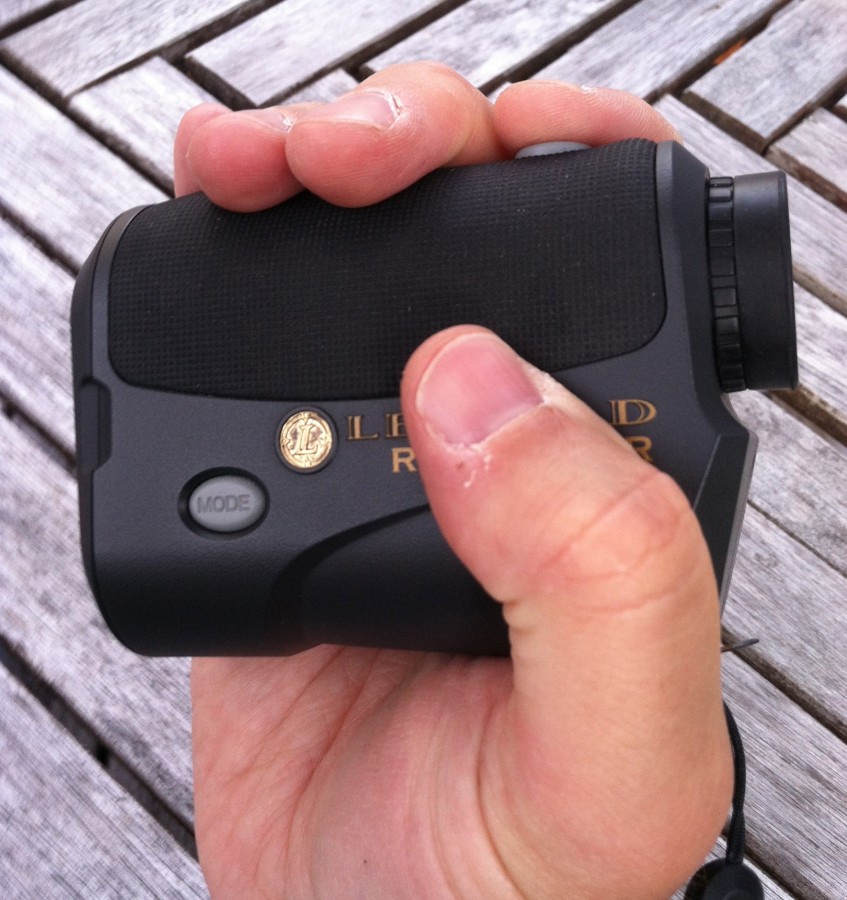
The RX-800i/TBR is a handy, palm-sized package that weighs next to nothing in your hand, and it’s got a rubberized texture on top for a better grip. It’s very comfortable to carry and hold, and the secondary ‘Mode’ button is located where it’s just about impossible to accidentally activate it while you’re ranging targets.
The unit’s 6x magnification is fairly high for a monocular. It’s a little hard to hold steady at 6x magnification with one hand, and you’ll find yourself bracing your elbow on your chest or using two hands to steady it at small targets. It’s no biggie, but worth mentioning.
Another Brief Lesson In Optics
The term ‘exit pupil’ describes the width of the column of collimated light that emerges from the ocular (eyepiece) of an optical device. Shooters often call it the ‘lightbox’ or ‘sweet spot,’ and it’s where you put your eye to get a full (un-vignetted) view through your scope. For binoculars or rifle scopes, the size of the exit pupil equals the diameter of the objective (front) lens divided by the magnification of the device.
The exit pupil of large 8×50 field binoculars is 6.25mm, which is why field binoculars are very bright and easy to get your eye behind. The RX-800i/TBR’s exit pupil is much smaller than that: its 23mm objective, divided by its 6x magnification, yields an exit pupil (sweet spot) of only 3.6mm. Bigger objective lenses will always have a larger sweet spot than smaller lenses of the same magnification, so the only way to increase the exit pupil is to reduce the magnification or increase the size of the objective lens.
…And Here Endeth The Lesson
The RX-800i/TBR has a smallish exit pupil, and it takes a steady hold to point it precisely at a small target, but these are necessary tradeoffs for a rangefinder that reaches out to nearly a half-mile. The extra magnification comes in very handy at those longer ranges, because it lets you aim precisely at a particular animal or tree (or in my case, car or street sign) instead of just pointing at an area and hoping you’re getting a good reading.
Shorter-range laser rangefinders don’t need the extra magnification, but the RX-800i/TBR puts it to good use.
Target Reflectivity
I couldn’t find a target that the RX-800i/TBR couldn’t range for me, even when I aimed at the tiny insulators of a far-off transmission line tower. Whether pointed at dry trees, fire hydrants or wet pavement, it always gave me a quick and consistent range to target. No problems there.
Yes, It Does Windows
The RX-800i/TBR is programmed to ignore the first really close laser reflections, so you can use it to range distant targets even when there’s a closed window in the way. Not that you’d be shooting through your living-room window, but you can still range through it if you’re curious.
Menus
The menu system is kind of a hassle. It’s impossible to have a Mac-worthy user interface when you’ve only got two buttons and a limited display to work with, and this one is no exception; you’ll probably have to go through it several times to properly set every function you want. Once you get it set the way you want it it stays that way, but do not lose the owner’s manual. You’ll really need it when it’s time to replace the battery in a few years. Or after your nephew pushes all the buttons and scrambles all the settings.
The rangefinder’s display offers only cryptic clues as to what you’re doing, and I’d hate to have to decipher it in the field without the manual to help me. Luckily, the manual is small enough to fit handily into the padded carrying case.
CONCLUSIONS
Since this is my first laser rangefinder and I’m still getting over how cool it is to absolutely know the distance to my target without any guesswork, you’re free to take my conclusions with several grains of salt. I’ve tried to be thorough, however, and test the RX-800i/TBR under many conditions.
The RX-800i/TBR is an accurate and easy to use rangefinder for a long-range hunter or marksman. It demonstrated itself to be at least as accurate as any of my methods for testing it, and its ‘point and shoot’ interface is incredibly easy to use once you get it set up.
If you like to shoot at really long ranges (in my book, really long range starts at about 750 yards) the RX-800i/TBR will leave you guessing your holdover as you get way out there; it just doesn’t have the range to keep up with a 6.5 Creedmoor or .338 Lapua at their limits. If you play at these ranges you’ll need a top-end, extreme distance rangefinder, and the compact $280 RX-800i/TBR is not in that class.
On the other side of the coin, there are many lower-priced (and less-capable) rangefinders that may fit the needs of shooters who rarely attempt targets beyond 300 yards.
The RX-800i/TBR’s high magnification and small exit pupil mean that it takes a hair longer to line up on target than a lower-magnification rangefinder, but these fairly minor drawbacks seem to be worth it when you’re lasing something at 600-800 yards. If you haven’t done much rangefinding, it can be surprising just how far 600 yards is.
If you need a rangefinder that gets the job done in rain or shine out to 800 yards and compensates for uphill and downhill shooting, the RX-800i/TBR is strongly recommended.
SPECIFICATIONS:
Maximum Range: 800 yards
Dimensions: 3.0″ x 4.2″ x 1.6″
Weight: 6.0 oz
Battery: CR-2032
Waterproof/Fogproof
Includes: Padded Carrying Case, Adjustable Neck Strap, Battery
1-Year Warranty
Street Price: $280-300
RATINGS (Out Of Five Stars):
Operating Range * * * * 1/2
Most rangefinders don’t reach out to 800 yards, and neither do most riflemen.
Size/Weight * * * *
Comparable in size and weight to many less-capable rangefinders.
Ease Of Use * * * *
Hold it steady, then point and shoot.
Ease Of Programming * *
Thankfully you’ll only have to do it every few years.
Accuracy/Repeatability * * * *
I only withheld the fifth star because I lack the means to test it more rigorously.
Overall Rating * * * *
Leupold delivers. This shouldn’t be a surprise to anyone.

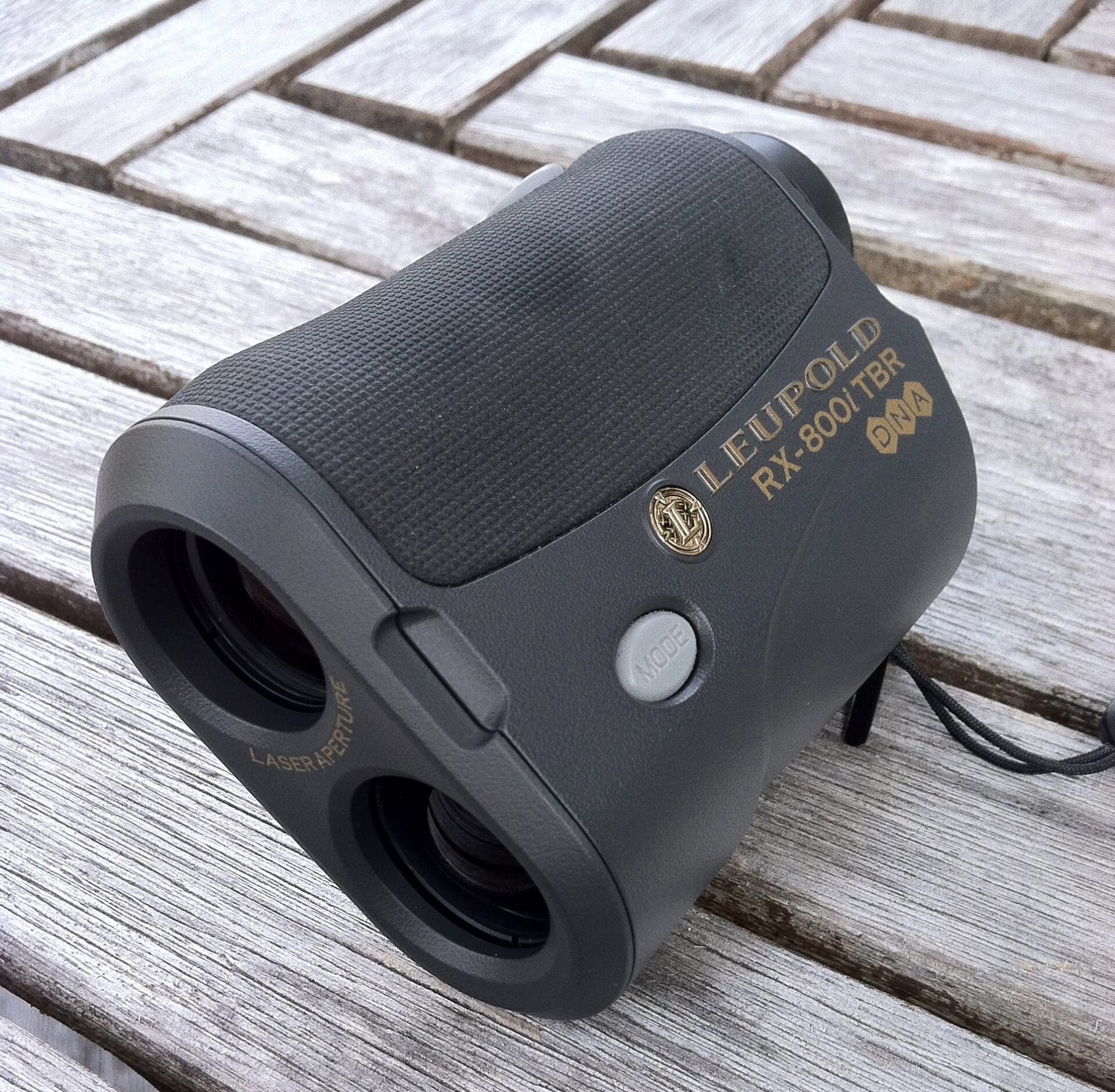
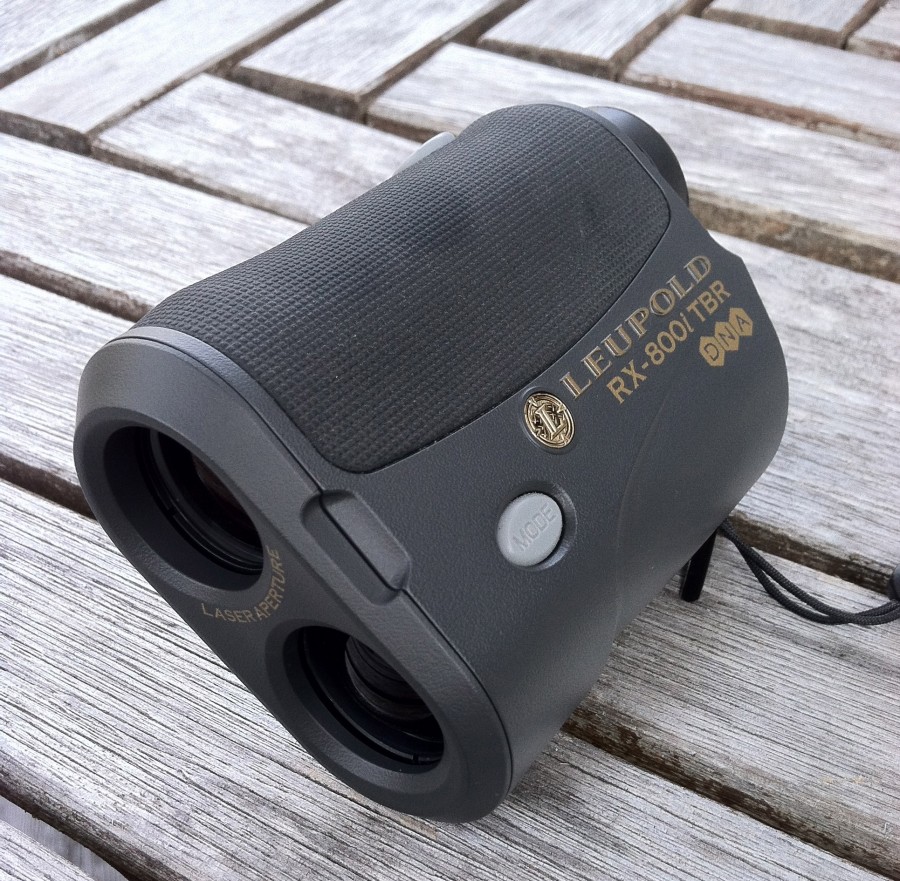
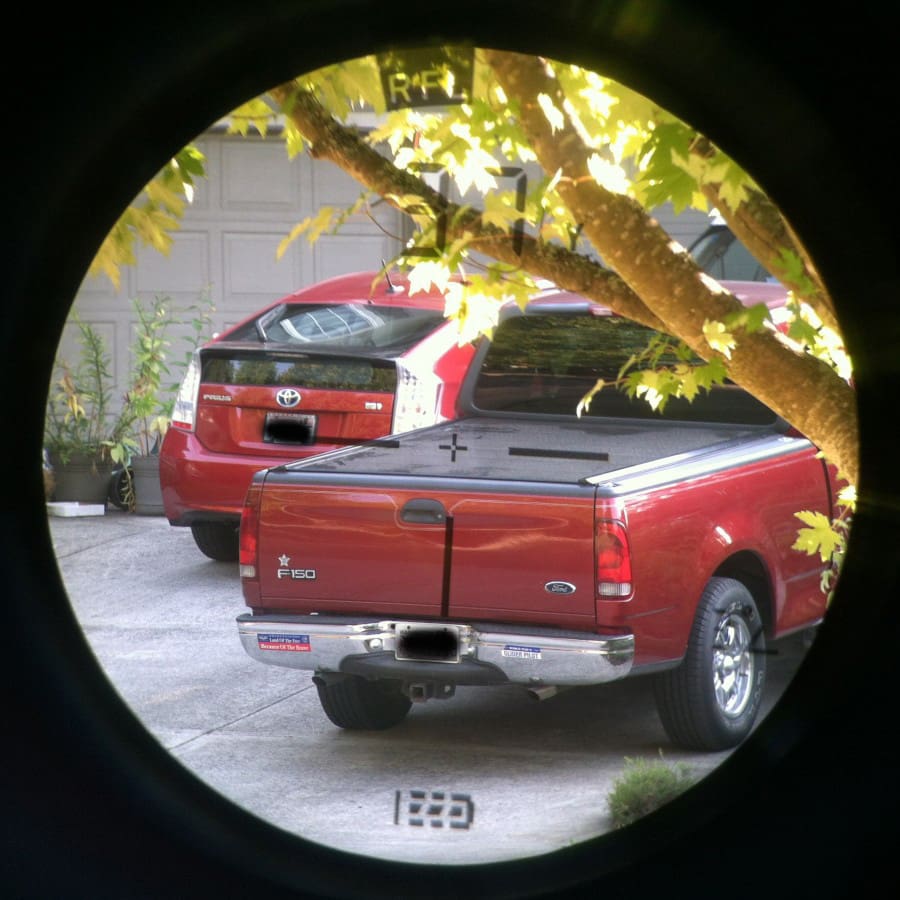
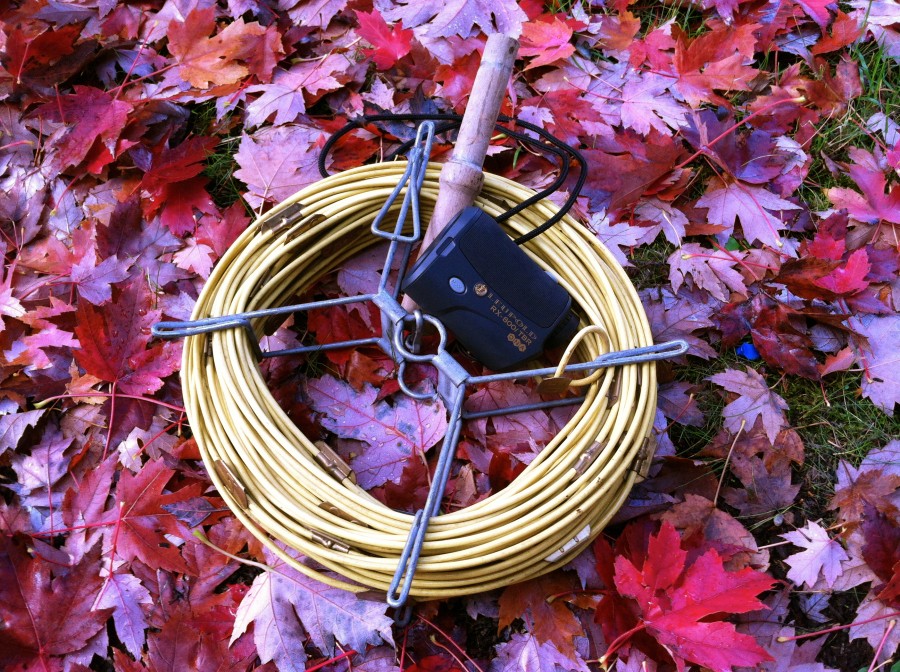




Good Grief Charlie Brown! Some 35 years ago I shot a hog in the neck from 250 yards and didn’t need a friggin math teacher to do it. OK, I was aiming for the head. By the time you youngsters figure out your gear, us Kentucky windage folks will be skinning our deer. Or shooting your eye out, which ever is necessary.
Kentucky windage is alot harder if you can’t see your bullet strikes.
Great review, answers many of the questions I’ve had about the sub-$500 rangefinders. Definitely have to move this one to the top of my Amazon wish list.
If TRAG reviews included Amazon links with referral codes, I’d be happy to support TTAG by buying via your link.
Damn iOS autocorrect. I fixed that first “TTAG” twice before posting, and it still came through as something else.
Isn’t one of the Romney boys named Trag? 🙂
Since this is my first laser rangefinder and I’m still getting over how cool it is to absolutely know the distance to my target without any guesswork, you’re free to take my conclusions with several grains of salt.
Nope, you pretty well nailed it all.
But this does bring up one of those meta-points that always puzzles me about the firearms community in general and has for 40 years.
How does anyone with even a few guns not have at least a couple of lasers by now? Quickest, easiest, most accurate, bore sighting? I’ve used laser for the last 20+ years. Ranging? Same thing. It’s like not owning a good cleaning kit or screwdrivers. Lasers are a basic tool for anyone who shoots at any distance. Or who likes that little red dot on your close-up targets.
I get that some people don’t want to use them as a crutch, or rely heavily on them, but not using them is like building a house without a tape measure or power tools. One can do it, but why?
Obscure the license plate tags in the photo. Jeez, a blind man could read those through a wool blanket.
Done. Thanks.
See your bullet strikes? You might need to do that if you are shooting 1000 yards for competetion. At practical hunting ranges a Remington model 700 and Leupold 4X will put meat on the table all day once zeroed. In any wind or weather, if the shooter knows what he’s doing. Which means they know when not to shoot. The information age has made many possible good shooters into bullet strike aficionados…who don’t put many groceries on the table. Go back to watching TV sonny.
Not everything is about hunting.
Listen, if you want to be a real traditionalist go back to using a simple handmade longbow or a spear to hunt. The industrial age brought in such advancements as the ones in your Remington 700, but if I hunt with more primitive tools it doesn’t make me a better hunter. “Hurr Durr, I’m a better hunter cause I hunt with piece of crap gear, sonny” – No, you just hunt differently, and saying that makes you look like a moron.
My surplus .303 Brit took several 100 yard deer with iron sights back when I was a kid, no scope required. So what? I could have placed my hit better with a scope and even better with the exact range to dial in. Didn’t need it, but it would have been better.
You can make a car run with a carb, but I can always make it quicker/faster/better with fuel injection. Always. I can kill a buffalo at 200 yards with a .45-70 and iron sights, but I’d rather use the .458 Win Mag and a scope. It’s simply better.
Tech can become a crutch and eliminate the need for understanding basic processes. It can also be used as a tool to improve performance. You can Kentucky windage mythology all you want, if it comes down to who can hit, properly applied tech wins every time. If it didn’t, we’d still use Norden bombsights…
Nice review and I was genuinly surprised at how affordable this is. Looks like a nice piece of equipment!
I get the point that not everything is about hunting, and I would love one of these gadgets for reasons that don’t even have to do with firearms. But a fair share of rifle cartridges, if sighted to hit 2″ high at 100 yards, will hit a deer or elk in the boiler room out to 300-350 yards without any compensation. No calculations involved. And beyond that, most of us can’t hit reliably anyway, because no matter how exactly you know the range, you also have to allow for wind, and for how far an animal can move between the time you pull the trigger and the time the bullet arrives. Not to mention that at longer distances you might not get reliable enough bullet expansion for a clean kill. It would be great for varmints though.
So I have a confession.
During my youth, hunting with family, and later during my time as a Reservist, I learned that I SUCK at guessing ranges.
Absolutely suck. Beyond 75 yards I’m guessing- and failing badly.
So- do I need a range finder?
Need no. I can, as some in the comments suggested, get closer or sight in high, or use any one of numerous methods.
Want? Yes. Very much so yes.
Does using a range finder make me less of a hunter?
I don’t think so- I think it helps me gain confidence and take ethical shots at game. My personal opinion is that any equipment that assists a hunter take an ethical shot and hit cleanly is good. Now, learning skills to make those same shots with out equipment is always a good idea.
Even though I rarely see wild game at more then 200 yards where I hunt, I like rangefinders.
Even though I’ll happily shoot at paper at any range, I don’t hunt beyond 100 yards- because I know I can stalk game and get within 100, and I know that in any position I can place a round where I want at 100 yards.
Because I hunt so close, and still use a rangefinder, many old hands around me choose to make jokes and poke fun at me. Well and good- I know I can have a successful hunt, and get meat in the freezer- and at the end of the day, that (and having fun) is the point- right?
Great review on the leupold, as my Nikkon Circled the drain last year, I’ll be looking into this model more- thanks
The thing is, that once you actually start using a rangefinder, it will help you not actually need one.
Some folks are born with that calibrated eyeball, some aren’t. There’s nothing wrong with being in either camp, and if the laser makes you better, so be it. Use the tools, that’s why we humans invented them.
It will help your “mental chart” of the ballistics of what ever you shoot, because it’s actually accurate.
Thanks for the review, Chris. It’s always funny how a review pops up around the times I’m looking for things. I just spent a half hour yesterday starting my investigation into these.
Haha you’re combining him and Palin. Her son is Trig, his is Tagg.
Hunting from a tree stand with a muzzleloader and or slug rifle, what would be the best set up for the Leupold RX-800i/TBR Rangefinder?
Great review!
Recently bought an AR with an Eotech holographic sight that’s good out to several hundred yards. I don’t know Kentucky windage like some who’ve commented here, nor do I have the willingness to spend countless hours learning. Doesn’t make me a bad person.
If I can use something like the Leupold 800i to speed up my ability to be on target at distance (I so totally suck at range-guessing by eyeball it’s pathetic beyond twenty+- yards), then it’s a winning solution for me. Coming on 55 years old with eye-sight that’s beginning to wane, a solution like this is even more valuable to me.
Comments are closed.